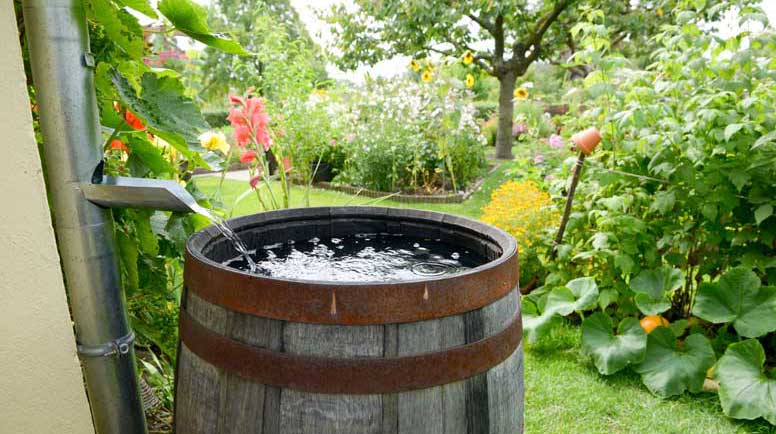BEST WATERING TECHNIQUES FOR DIFFERENT HYDROZONES
Knowing when to water is as important as how much to water
For trusted expertise and superior results,
find a landscape professional near you.

A growing number of homeowners are considering rainwater harvesting, and it’s no wonder as this eco-friendly practice of capturing and using rain has many benefits. For instance, it can reduce the amount of storm water that exits your property and flows into storm drains. It can also reduce the load on your local municipal water supply, and save you money at the same time. It’s important, however, to know what to do - and what not to do.
Do Use Rain Barrels and Place Them Wisely
The great majority of homeowners who harvest rainwater use it in their landscapes. This generally means collecting rain using barrels attached to downspouts of the home. If your goal is to use stored water to irrigate the landscape, it’s important to consider where your rain barrels will be placed in relation to where you will need water. Most rain barrels have a spigot at the bottom and utilize gravity to get water out. As such, you don’t get very much pressure and it can be difficult to move water any distance, unless it’s going downhill. While it may seem like a wonderful idea to have rain barrels at every downspout, collecting rainwater in a part of the yard where you can’t use the water, may mean the barrel becomes full of fetid, unused water.
Some rain barrels are available with submersible, electric pumps. These can be connected to a standard garden hose, allowing you greater flexibility in where you use your water. The one down side is that you’ll have to make certain there’s an outlet close to the rain barrel’s location, potentially adding to the cost.
Don’t Collect Too Much Water
It’s also important to consider what will happen to excess water. Even if your water needs lead you to empty your rain barrel quickly after it fills, a good summer storm can fill the rain barrel much quicker than normal, often creating overflow. Allowing the rain barrel to overflow and dump water right against the foundation of your home is not a good idea as wet wood can lead to structural issues and create a harborage spot for pests.
There are two popular practices for managing too much rainfall. The first involves the use of a diverter attached to the downspout before it gets to the rain barrel. When you have enough water, or if you’ll be away for a while and don’t want the water growing stagnant, you can flip the diverter and the rainwater will bypass the barrel and go out into the yard .The other practice, one that should always be done, is installing an overflow pipe near the top of the rain barrel. This pipe can be run away from the home’s foundation, allowing the overflow water to run out into the landscape.
Do Protect the Quality of Your Water
Finally, it’s important to take steps to maintain water quality in your rain barrel. A mesh screen between the downspout and the water inlet will prevent most debris from getting into the barrel. It will also keep small animals from falling in. If you’re not quickly emptying your rain barrels, it’s important to have a means of controlling mosquitoes as they breed in even small amounts of water.
Harvesting rainwater is good for the environment and good for your wallet. You can buy rain barrels at many garden centers and online retailers, if you want a turnkey solution. If you want to build your own but want some guidance, many municipalities offer low cost classes on making and using rain barrels, and you get to bring your new rain barrel home with you at the end of class. Whichever route you take, collecting rainwater is a smart practice for you, for your landscape and the planet!
Note: Some municipalities have restrictions on private rainwater harvesting. Check with your local officials before investing in rain water equipment.
We recently updated our Privacy Policy. By continuing to use this website, you acknowledge that our revised Privacy Policy applies.